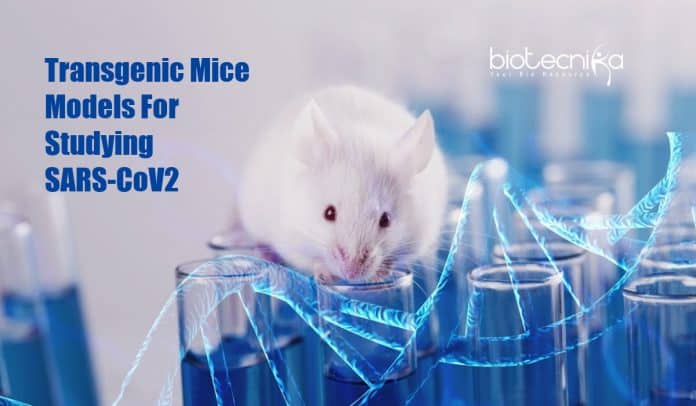Scientists Create New Model Organism For SARS-CoV2
In an effort to control and curb the spread & fatality of SARS-CoV2, scientists and medical care workers worldwide are increasingly advancing medicines and vaccines. However, prior to human study trials, animal testing has to be performed. Rodents are the apt model organism due to their small size and high fertility rates. Additionally, there are well-studied inbred strains, where all are genetically alike and hence can be easily studied.

Coronavirus invades human cells primarily by attaching to a receptor. Receptor interaction with the virus is mediated by lock-and-key precept: virus key- a protein of viral coating-binds to the lock-ACE2 receptors of humans (hACE2). But in rodents, SARS-CoV2 can’t invade mice cells by attaching to murine ACE2 as the key and lock don’t fit. Since the viral protein (key) can’t be altered, the lock is changed. Thus with the introduction of human ACE2 receptors in rodent’s genetic makeup, the route and therapy of a coronavirus infection can be understood in rodents.
Human receptor variant integrated mice
Hans Schöler, Max Planck Institute for Molecular Biomedicine, Münster, and co-workers from China developed transgenic mice with the expression of human ACE2 receptors on their cells, in a collaborative study. Scientists employed tetraploid complementation, a stem cell research technology comprising of the fusion of cells from a two-cell donor embryo. As the cells generally are diploid with two sets of each chromosome, the fusion of these results in four copies of chromosomes. These resulting tetraploid cells can’t develop into a living embryo but form into a cellular coating that eventually develops into the umbilical cord and placenta. To develop a viable embryo from tetraploid cells, embryonic stem cells are positioned within tetraploid cells.
Researchers employed the CRISPR-Cas9 genetic tool to introduce hACE2 into the embryonic stem cells of rodents. Along with tetraploid complementation, the genetically transformed stem cells grown to form mouse embryos, with genes making receptors like humans. Once the transgenic mice were having SARS-CoV2 infection, scientists were able to observe viral activity in the respiratory tracts and lungs of these rodents. The progression of SARS-CoV2 infection in mice is similar to that in humans, claimed Hans Schöler. For instance, mice were also developing lung damage and acute respiratory disease syndrome after coronavirus infection. Treatment methods used in humans with neutralizing antibodies ceased the viral multiplication in respiratory tracts and lungs in mice as well. Their transgenic mice are thus an ideal model organism for studying the impacts of drugs against SARS-CoV2 and neutralizing antibodies, for instance, explained Schöler.
Transgenic rodents in record time
Thanks to the advanced technology, the scientists have created transgenic hACE2 rodents with a record-breaking time frame. Based on the breeding effectiveness, the procedures like the introduction of embryonic stem cells into blastocysts could take many months before the first genetically modified mice are produced. Even though the nuclear transfer is quick like tetraploid complementation, the procedure is very complex. The chromosomes should be isolated from the donor egg cell using a thin cannula and the altered DNA must be further presented into the egg cell. The rate of success is really low. Tetraploid complementation is relatively simple compared to the above method, mentioned Schöler. Thus this technology enables the development of entirely different rodent models for SARS-CoV2 disease within merely 35 days.
The possibility of modification and research studies of embryonic stem cells are extremely beneficial before the application of tetraploid complementation. This lowers the time-from several months to weeks-as well as the number of rodents needed for the study, stated Schöler. Even though combating the prevailing pandemic situation is of prior importance, these techniques can also aid pathogen experts in fastly responding to the emerging issues of novel pathogens.
Model Organism For SARS-CoV2
Author: Geema George






























